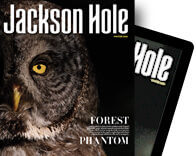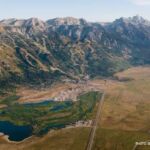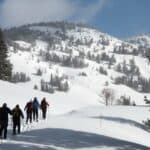Read The
Current Issue
As Told By: Leslie Steen
// By Jasmine Hall
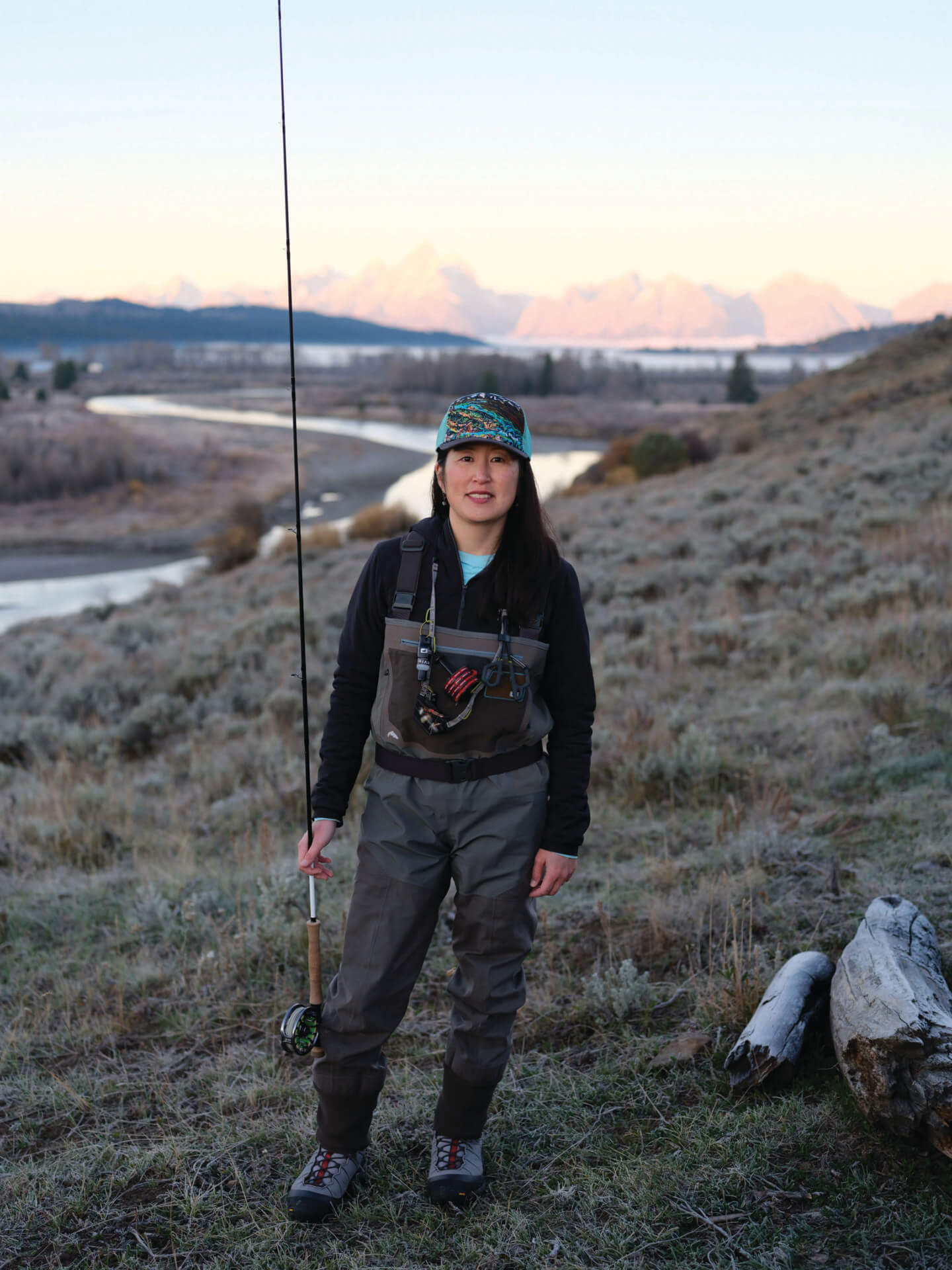
Like many who are swept off their feet by Jackson Hole, Leslie Steen moved to the Tetons in 2007 thinking she would take a year off after graduate school to ski for the winter. She’s still here nearly 18 years later, protecting the wild rivers and streams of northwest Wyoming. “I was trying to decide if I was going to move to Jackson or Missoula. I came out over spring break, and the Alpinist Film Festival was happening at the time,” she says. “That was so fun. I met some of my friends that are still my friends today, who were my first roommates in Jackson. I met the guy who is now my husband.”
Steen grew up in the decidedly urban environment of Manhattan’s Lower East Side and went to college in the city’s Morningside Heights neighborhood, but she discovered environmental science her freshman year at Columbia. Before classes even started, she did a pre-freshman orientation backpacking trip. “That got me interested in the outdoors,” she says. Then, she enrolled in what was billed as a science class for non-science majors that focused on environmental science. Steen found the class so interesting that she switched majors from literature to environmental science.
After graduating from Columbia, Steen focused on fisheries. “I was working for Outward Bound and got funds from them to go on a sea kayaking trip in Alaska,” she says. On that trip, she met women who worked for Alaska Fish & Game, and a salmon jumped over her kayak while she was paddling. “I was always fascinated by salmon—they live in fresh water and the ocean and are able to find their way home,” she says. “I thought that if I worked with fish, I’d always get to spend time on the water, which I had always loved.”
After doing thesis work on the Bitterroot River studying why streams were dewatered and fish were being stranded and how to rejuvenate them (thesis title: “An Assessment of Losses of Native Fish to Irrigation Diversions on Selected Tributaries of the Bitterroot River, Montana”), Steen graduated with a Master of Science degree in fish and wildlife management from Montana State University in 2007. Her thesis fieldwork was interesting not only because she did all her research through snorkeling, but also because she learned the importance of relationship building. “I had to get permission from all the different water users,” she says.
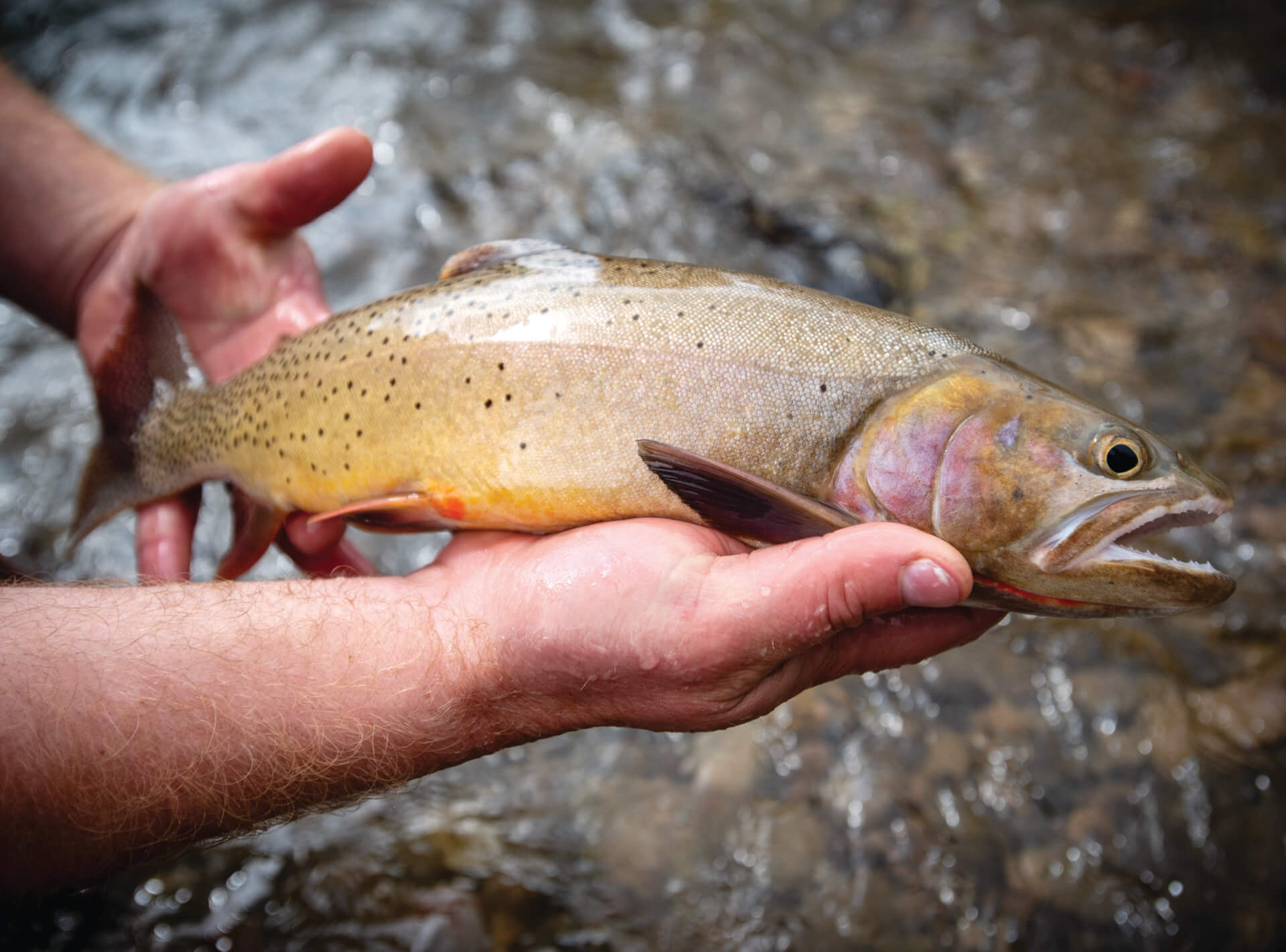
“I hope in the future, my kid, hopefully grandkids, will be able to still fish for cutthroat trout and have clean, cold water in this area.”
This is a skill she saw being utilized by the organization she has since dedicated a large part of her life to: Trout Unlimited. In the Blackfoot River Watershed, Trout Unlimited, anglers, and ranchers worked together to find a way to solve the impacts of irrigation ditches. The nonprofit’s mission is “to bring together diverse interests to care for and recover rivers and streams so our children can experience the joy of wild and native trout and salmon.”
It wasn’t until nearly a decade later that an opportunity at Trout Unlimited presented itself to Steen, though. She had spent the ensuing years building connections in the Jackson Hole community; she worked at Calico, the Alpinist Film Festival, and Jackson Hole Land Trust. “It was always my dream to work for Trout Unlimited in Jackson, and I’ve been able to do that since 2016,” she says. Steen started as a project manager and, over time, her role at the organization has grown and shifted, as has her personal life. She got married in 2011—read about her husband, Scott, executive director of Slow Food in the Tetons, on page 26—had a son, Oliver, in 2020, and, since 2023, she’s been the state director of Trout Unlimited in Wyoming.
There are many other ways Steen has left her mark on Jackson in the past two decades. She was a cofounder of the Mountains of Color Film Festival because, she says, “it was a unique opportunity to create something special that hadn’t been done before—a film festival highlighting people of color’s stories in the outdoors and conservation.” Last year, she was one of six locals featured in Visit Jackson Hole’s first “Mountain of Youth” campaign, which shows that the secret to youth doesn’t come from a serum or a jar, but in staying wild. “I was so surprised to be picked!” Steen says. We’re not. When not working on behalf of healthy fisheries, Steen can be found swimming in alpine lakes, hitting the slopes, and exploring with her family.
Here, Leslie Shares more of her own story
In the work that we do, relationship building is everything. I’ve thought about it a lot because, for example, I’ve been through hiring staff. And when you think about the personality type and the qualifications you need for someone to hire, there’s the list of things that are nice to have, right? Someone who has a fisheries background, someone who has previous nonprofit experience or grant writing experience, or working-at-an-agency experience. But none of that matters if you don’t have the relationship-building skills and you’re not willing to put in the time because for a lot of these projects—it’s the long game.
Most Trout Unlimited projects in the state take a minimum of three years, sometimes five years, sometimes 10 years. Some folks work for Trout Unlimited that worked on getting the Klamath River dams out this year. They have been working on it for over 25 years. So, you really have to be willing to invest that kind of time and put in the roots in the community. Luckily, we have a wonderful community.
For me coming into the job, I was able to really hit the ground running because I had worked for the Jackson Hole Land Trust for four years, and you get to know a lot of the private landowners in the community. A lot of them have conservation easements, and that’s really telling, too, because that already says that a lot of private landowners in this community are conservation-minded. There’s this huge history of conservation in the valley, whether it’s the wildlife conservation piece or this land conservation piece. There’s that ethic, and I think that’s what makes this place special. You can find common ground with anyone, I would hope, but it makes it easier to find common ground when people are ready and are willing to think about the stewardship of the water and the fish on their properties.
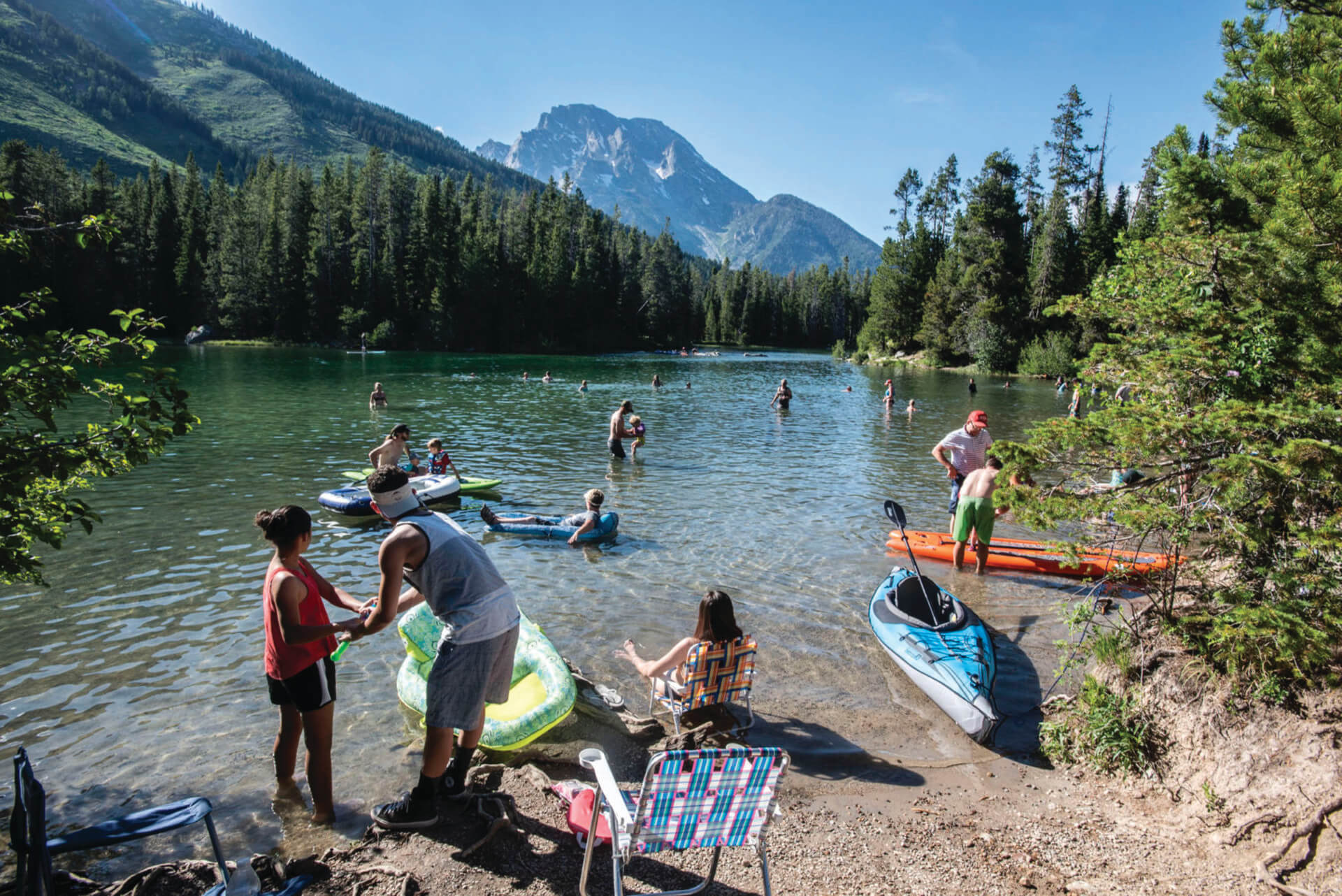
Kid-friendly Water Adventures
The Steen family loves having adventures on the water. Here are some of Leslie’s favorites:
1. In the summertime, after preschool and work during the week, we head up to String Lake to paddleboard and eat a picnic dinner. We sometimes call ahead and pick up a pizza from Hand Fire in downtown Jackson.
2. Paddleboarding at R Park in Wilson is great because it’s a small body of water. There are places to wander along the margins without the worries of deep, fast-moving rivers.
3. Camping along the Buffalo Fork River is great because it’s close to Jackson, and it’s another place where the water’s edge doesn’t run so fast for little ones. It’s particularly special because we baptized our son in the river.
Fish Responsibly
Most of the fishing in Jackson Hole is catch-and-release. It’s understandable to think that releasing a fish after you’ve hooked it means you’ve helped the fish—after all, you’re freeing it back into the river instead of onto a dinner plate. But you can, and should, do more to help ensure the valley’s fishing remains the amazing resource it is today. Steen defines responsible fishing as “making sure that something you do for enjoyment, recreational fishing, does not negatively impact the fish and ecosystem that make this activity possible.” Here are some guidelines:
1. Don’t fight a fish on the line for long periods of time. Bring the catch in relatively quickly and use a net—they make it easier to manage the fish and give it a better chance of living after release.
2. Use barbless hooks; these will pop out of the fish’s mouth on their own. This decreases the chance of wrestling with the fish outside of the water or harming it.
3. Protect the mucous membrane around the fish by getting your hands wet before you handle it. If you want to take a photo, instead of holding the fish out of the water, keep it in or just above the water.
4. Start to modify your fishing plans when water temperatures rise above 65 degrees Fahrenheit, and stop fishing when they reach 68 degrees. There’s an optimal temperature range for cutthroat trout and trout in general, and at the upper end, fishing can be lethal for them. There’s also less oxygen in the water when it’s warmer, meaning the fish are already stressed by just existing.
5. Dry, clear, and drain your gear after each fishing excursion to limit the possibility of introducing aquatic invasive species.
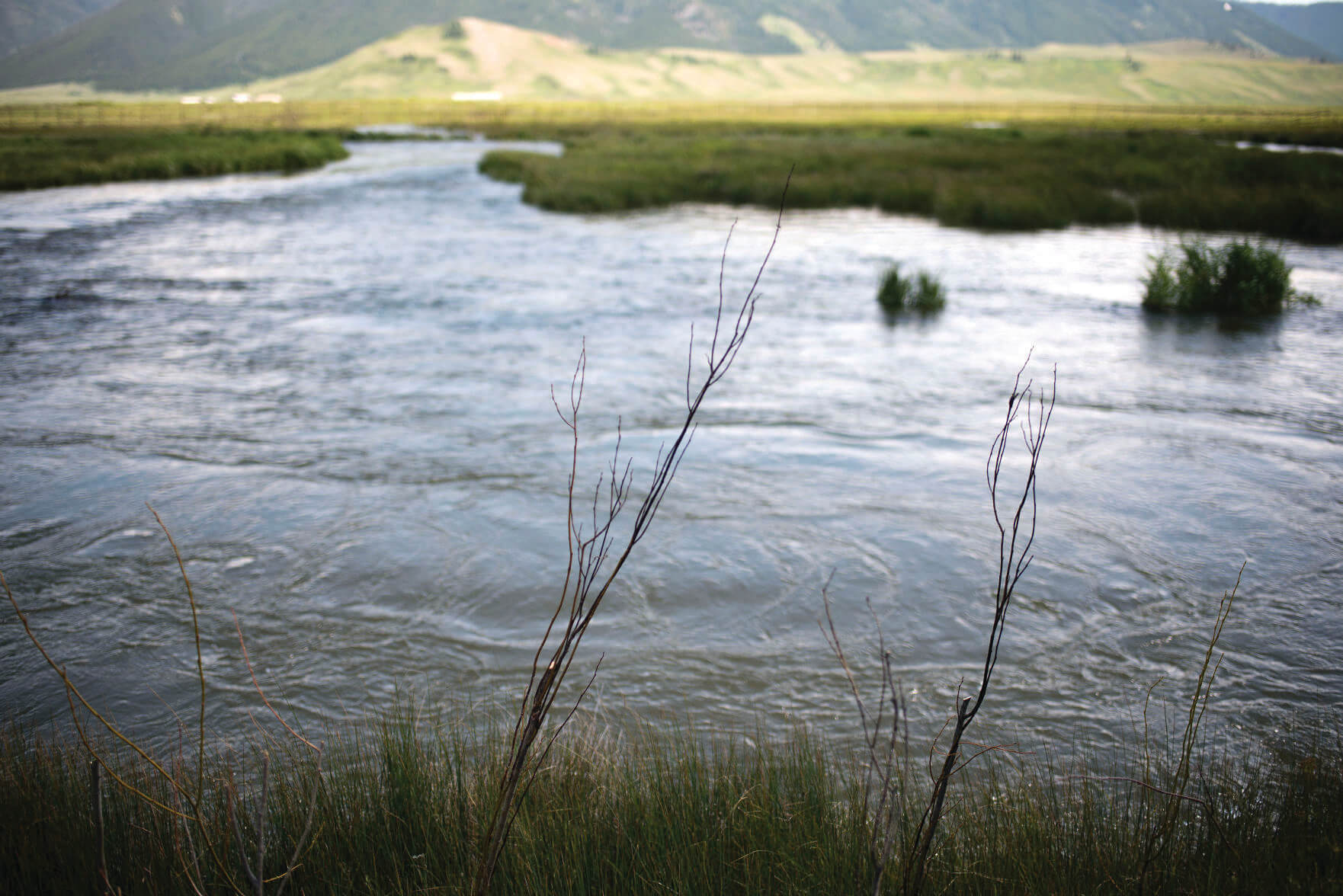
Get Involved
Jackson Hole and Wyoming Trout Unlimited offer many ways to give back to area rivers and streams. “Nearly every project Trout Unlimited takes on has a volunteer component,” says Steen. Go to tu.org/snakeheadwaters to find current volunteer needs. Usually the nonprofit uses volunteers to:
• cut and plant willows to revive the vegetation on the banks;
• build riparian vegetation to help protect the willows and cottonwoods;
• rescue fish stranded in irrigation ditches near Teton Village (this usually happens toward the end of the season). JH
